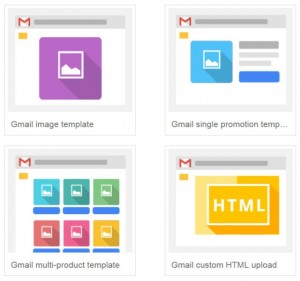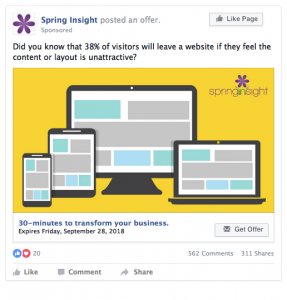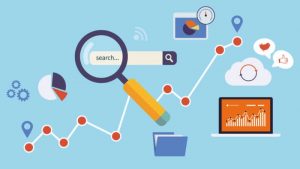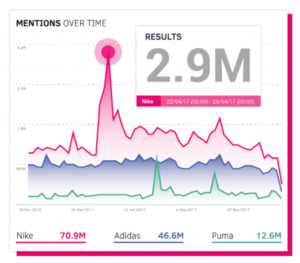— September 3, 2019

In today’s customer-centered economy, focusing on short-term customers is an outdated business model. Instead, enterprises must nurture every customer relationship to increase retention and customer lifetime value (CLV).
Customer lifetime value is the net profit acquired from a customer throughout a company’s relationship with them. The easiest way to calculate CLV is to multiply the annual profit gained from a customer by the average length of time of customer retention.
Knowing each customer’s customer lifetime value helps you know how much you should be spending on customer acquisition. A customer’s acquisition cost could be more than what they spend on their purchase, but if you nurture that relationship, their CLV may grow to an amount that’s well worth the investment. That’s just one of the many reasons why success in the customer-centered economy means understanding the importance of customer lifetime value.
Understanding the Importance of Customer Lifetime Value
There are many reasons why CLV is useful. By focusing on your customers in this subscription-based economy, they can help you build a better product for future customers. While you benefit from maintaining your current customers, those same customers will also become more successful by fully adopting your product. You both need each other to constantly change and grow. Nurture your current clients, analyze their habits, and personalize their experience so they will stay by your side.
For example, create a positive customer journey to encourage your clients to renew and this will speak volumes about your brand and its ability to retain customers. You can develop a profile of your higher-tier customers to make it easier for the sales team to find new customers who share the same characteristics. On the other end of the spectrum, you can offer lower-tier customers upsells to grow their CLV. Just be sure you are only offering upsells if the solution would really provide increased value to the customer; don’t push upsells just for the sake of having an upsell.
High CLV customers are loyal customers, and loyal customers offer your company an array of benefits. They stay with your brand longer and can offer valuable feedback on how to improve your product or service. Once you’ve truly captured their loyalty, they often become your best brand advocates, singing your praises and giving you good word-of-mouth referrals. This following of happy customers will reflect well upon your brand and give you a better reputation.
Loyal customers are more likely to try new products or features, which increases their CLV even more. This is an excellent strategy for the customer-centered economy: growth from within the current customer base.
And, of course, high CLV customers are good for your bottom line. After all, raising CLV saves money on acquisition costs and maintains profit margins. Loyal customers ensure stable revenue to come.
How to Boost Customer Lifetime Value
Increasing CLV means engaging customers and deepening loyalty. There are a few ways to do this:
- Provide Value Throughout Every Stage of the Customer Journey. You should build a plan for every stage of the customer journey and create standard processes. For each stage, you should create actionable goals that follow the SMART framework: Specific, Measurable, Attainable, Relevant, and Timely. You can make sure customers receive new value by continually adding new features and educating customers on how to use them. Also, be sure to optimize your onboarding and adoption stages. Instead of being reactive during these two stages and waiting for customers to complain about problems they’ve run into, be proactive by sending them frequent messages and educational materials, and monitor and act upon changing health scores.
- Create a Community. You want to give customers a place where they can connect and learn from each other. The best way to do this is to establish a forum that allows your customers to ask questions and get answers from other people who use the product.
- Listen to Customers. Customers should always feel heard and supported. To do this, take steps such as creating a Customer Advisory Board and collecting customer feedback through surveys. Then, use this information to optimize the customer experience accordingly. It’s also important that you have a thorough understanding of customer goals and that everyone in a customer-facing role has access to critical customer data.
- Analyze Trends. You should track customers throughout the entire journey, keeping an eye out for relevant patterns and using that data to improve the different stages of the customer journey. For instance, are customers trying to use your product to solve issues besides the intended ones? Are they struggling with certain features? Are customers reporting poor experiences? These trends can help you improve processes. So, if there are a lot of support tickets coming in during onboarding, you should probably reevaluate your standard onboarding process.
- Engage Intelligently. It isn’t enough to just send generic automated emails. Rather, you need to provide context, personalized engagements, and always look to provide value. This means different things depending on your customer. One customer might be in need of a valuable expansion project. Another may need education on how to use a specific feature that you know could bring them value. As such, you should create nurture campaigns so that you will notice if a customer is struggling to use a certain feature or is not logging in.
- Use the Right Tools. It’s critical that you are able to look at both quantitative and qualitative data in context. This enables you to take the needed actions and establish repeatable, effective processes. So, you should use tools that allow you to collect all the customer data you need. For the best results, pair such tools with customer success software so you can create standardized workflows and set the appropriate goals. This software also helps to streamline communication between internal teams, provides tracking for business goals, and makes it possible to create actionable best practices for your CSMs.
Raise CLV Using Customer Success Software
Realizing the importance of customer lifetime value is the first step in harnessing its ability to make your company more customer-centric. It plays a critical role in building customer success by getting your business to focus on the big picture and to develop value through regular engagements. But unless you have the right software, it can be hard to track the CLV of large numbers of customers. If your firm finds itself struggling, try using a customer success platform.
A customer success platform is a powerful type of software that offers the capabilities you need to increase retention and deepen relationships. Using it, you’ll not only gain a total picture of CLV, but you’ll also have the ability to act on that intelligence accordingly.
So, don’t overlook the importance of customer lifetime value. Start strengthening customer loyalty and lowering acquisition costs now.
Totango offers a leading customer success platform that can help you properly engage customer segments based on customer lifetime value. Request a demo.
Business & Finance Articles on Business 2 Community
(48)
Report Post







